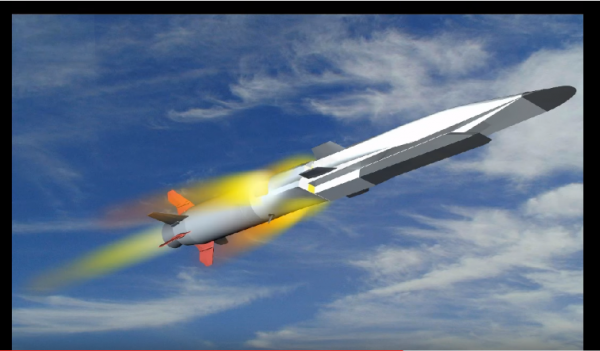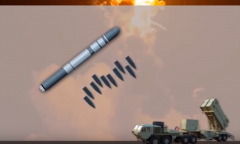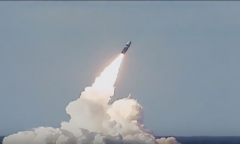By Prei Dy, | May 07, 2017

Russia has outperformed the US in hypersonic race, a high-profile scientist said. (YouTube)
Russia has surpassed the United States in hypersonic technologies, according to the Russia Academy of Sciences' Siberian Branch Vasily Fomin on Wednesday.
"The results are better than those of the US," Formin said, citing the study of aerodynamics as key in developing cruise missiles that are five times the speed of sound.
Like Us on Facebook
Russia's Deputy Prime Minister Dmitry Rogozin said last month that Russia was on par with the US in developing hypersonic weapons. The Russian Defense Ministry, in a statement, said that new samples of a hypersonic weapon and other cutting-edged weapons would enter the Russian Armed Forces by 2025 under the framework of the 2018-2025 State Armaments Program, Sputnik News reported.
Meanwhile, China is also planning to test a prototype combined-cycle hypersonic engine later this year in a bid to pave the way for the first demonstration of a full-scale propulsion system by 2025.
If China's test is successful, this will become the first hypersonic-powered vehicle or the first stage of a two-stage-to-orbit spaceplane, the Next Big Future reported.
"We also developed a low-cost near-space science and technology flight test platform," Lihong Chen, a professor at the Chinese Academy of Sciences, said.
Lihong also said that the first flight was successfully carried out, with key issues of the scramjet demonstrated at Mach 3.5-7 and altitudes of 15 to 30 kilometers.
Combined-cycle systems have long been studied as a potential way to access space and long-range hypersonic vehicles. The aircraft would take off similarly like a conventional plane before a supersonic scramjet engine kicks in to lift it to nearly 100 kilometers above sea level. After that, rocket boosters will provide additional thrust, supplying it with sufficient power to escape the lower atmosphere of the Earth.
China is poised to master the spaceplane's technologies over the next three to five years, and a full-scale spaceplane would enter service by 2020, Zhang Yong, an engineer from China Aerospace Science and Technology Corporation, said.
-
Use of Coronavirus Pandemic Drones Raises Privacy Concerns: Drones Spread Fear, Local Officials Say

-
Coronavirus Hampers The Delivery Of Lockheed Martin F-35 Stealth Fighters For 2020

-
Instagram Speeds Up Plans to Add Account Memorialization Feature Due to COVID-19 Deaths

-
NASA: Perseverance Plans to Bring 'Mars Rock' to Earth in 2031

-
600 Dead And 3,000 In The Hospital as Iranians Believed Drinking High-Concentrations of Alcohol Can Cure The Coronavirus

-
600 Dead And 3,000 In The Hospital as Iranians Believed Drinking High-Concentrations of Alcohol Can Cure The Coronavirus

-
COVID-19: Doctors, Nurses Use Virtual Reality to Learn New Skills in Treating Coronavirus Patients













